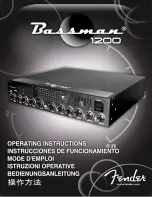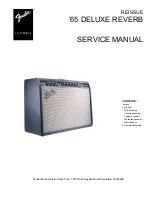
COND SGA-A & SGA-D Manuel_EN Rev3.doc
Page 13 on 20
Rev: 03/08/2006
1. The ‘Ref (5V/2,5V)’ should be connected to ‘strain input-’ and the mV source applied between ‘strain input+‘
& ‘strain input-‘
2. Set the correct switch settings on SW1 as described above using the transducer's calibration sheet supplied
by the manufacturer. This is normally specified as sensitivity or full range output and should be in mV/V
3. Ensure the Zero and Span switch settings are correct, as detailed in Chapter 3, Tables 3.6. & 3.9.
4. Apply the known low calibration conditions and fine adjust P2.
5. Apply the known high calibration conditions and fine adjust P1.
6. Repeat steps 3 and 4 until the required output is achieved.
Hint
If the required output at the low calibration point is 0V and the required output at the high calibration
point is 7.5V, adjust P1 in step 5 to produce a change of 7.5V between the calibration points. Initially,
the low calibration point may not produce 0V at the output. If this is the case, note the reading, e.g.
0.5V, apply the high calibration conditions and trim P1 for the required change in output, i.e. Trim the
output for 0.5 + 7.5 = 8V.
5.
TROUBLESHOOTING
5.1.
No output
a)
Check power supply is present (LED is on).
b)
Check the output connections are correct.
c)
Check terminations (ensure insulation is not trapped in terminal, cable break etc.)
d)
Check the sensor is connected (typically reading 350 Ohm across Strain and – and also Strain
Input + and – of J2) with the power off.
e)
Check the Excitation voltage (J2) is at 10V DC
5.1.1.
For voltage output
a)
Check V out+ and V out- terminals are wired
b)
Check the load is connected and is not open or short circuited
c)
Check SW4 settings are correct for Voltage Output see Chapter 3, Table 3.2
d)
Check Span and Zero settings (SW1 and SW2)
5.1.2.
For current output
a)
Check lsink+ and lsink- terminals are used for 'Sink' current output
b)
Check and lsource- terminals are used for 'Source' current output.
c)
Check the load is connected and is not open circuit
d)
Check load does not exceed 500 Ohms.
e)
In 'Sink' mode check 15 V is present at +ve terminal of load.
f)
In 'Source' mode check the –ve terminal of the load is connected to ground.
g)
In 'Sink' mode check the load is isolated from the load cell (sensor) excitation.
h)
In 'Source' mode check the -ve output is common to the -ve Excitation.
i)
Check output SW 4 settings are correct for current see Chapter 3, Table 3.2
j)
Check Span and Zero settings (SW1 and SW2) see Chapter 3, Table 3.6 & 3.9
5.2.
Low Output
This is when an output is present but not of sufficient magnitude to meet the required value.
a)
Check power supply is within specified limits (i.e. is not low)
b)
Check the sensor is connected (typically reading 350 Ohm across & - of J2) with the power off.
c)
Check the Excitation voltage (J2) is at 10V DC






































